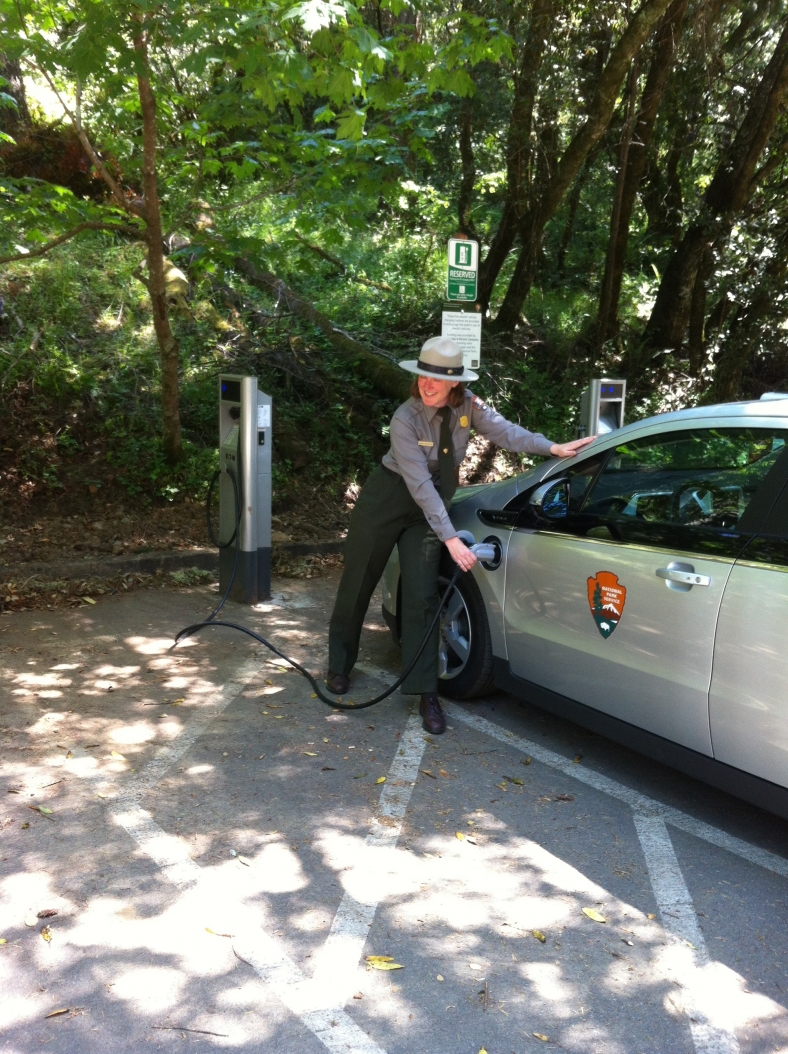Sustainable mobility in UNESCO sites (USA)
Clean Cities partners with the National Park Service (NPS) through the Clean Cities National Parks Initiative to support transportation projects that educate park visitors on the benefits of cutting petroleum use and greenhouse gas emissions. This initiative complements the NPSClimate Friendly Parks program by demonstrating the environmental benefits of cutting petroleum use.
Denali National Park and Preserve (Biosphere Reserve)
The most visited park in Alaska, Denali National Park and Preserve covers 6 million acres, located 300 miles south of the Arctic Circle. The iconic park is acquiring one plug-in electric vehicle (PEV) and one photovoltaic-powered charging station to help reduce emissions in Denali’s “Front Country,” home to several campgrounds, visitor centers, and administration facilities. The PEV will replace a gasoline-powered vehicle typically driven short distances. The charging station, to be constructed by local students, will pave the way for expanded use of PEVs in the area and help educate park visitors on the importance of cutting petroleum use and reducing emissions.
Yellowstone National Park (Biosphere Reserve)
Yellowstone National Park is adding an electric utility vehicle, two hybrid electric vehicles, and one hybrid electric bus to its fleet. With help from Yellowstone-Teton Clean Energy, the park is also enhancing its outreach and education efforts. Its idle-reduction campaign encourages visitors, employees, and residents of surrounding communities to avoid unnecessary engine idling.
Mammoth Cave National Park (World Heritage site)
Mammoth Cave National Park started using E85 in 1999 and today runs all its vehicles on alternative fuels. Thanks to new funding, the park is adding four propane-powered school buses, two propane-powered pickup trucks, and one electric utility vehicle to its fleet. In addition, park personnel are partnering with theKentucky Clean Cities Partnership to enhance efforts to educate visitors, employees, and the media about the benefits of using alternative fuels.
Rocky Mountain National Park (Biosphere Reserve)
Rocky Mountain National Park, with more than 3 million annual visitors, is the fifth most-visited park in the NPS system. With support from Northern Colorado Clean Cities, the park is planning to purchase one Toyota Highlander Hybrid and two Chevy Volts, install two electric vehicle charging stations, and boost idle-reduction through technology deployment and a comprehensive education and outreach program.
Glacier National Park (Waterton Glacier International Peace Park WHS)
Nearly all of Glacier National Park’s vehicles and other mobile equipment use alternative fuels. The park’s historic Red Bus fleet has been running on propane for more than a decade. In 2007, the park introduced a shuttle system along the popular and scenic Going-to-the-Sun Road. The shuttles, which can run on biodiesel, help reduce traffic congestion and emissions from private vehicles.
Mesa Verde National Park (World Heritage site)
Invoking the spirit of the Ancestral Pueblo people who made it their home for over 700 years, Mesa Verde National Park is working with Southern Colorado Clean Cities to cut harmful emissions. The park is eliminating inefficient vehicles that traveled nearly 400,000 miles, and it is adding four new propane pickup trucks and a propane lawn mower. A propane fueling station will also be installed for park use. Project partners are executing a comprehensive idle-reduction outreach campaign for staff, concessioners, and the park’s 500,000 annual visitors.
Grand Canyon National Park (World Heritage site)
Grand Canyon National Park runs an environmentally friendly alternative fuel vehicle fleet and a shuttle bus system for park visitors, reducing the number of vehicles on some of the park’s busiest roads. The park is also participating in the Climate Friendly Parks program to reduce its transportation-related greenhouse gas emissions 20% by 2020.
















